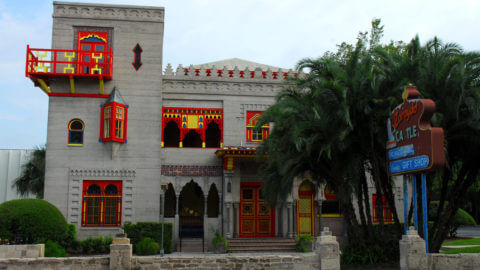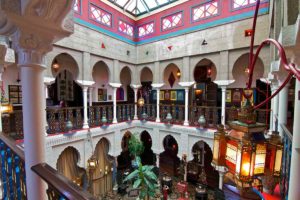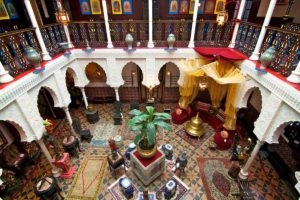A Collection Obsession
Posted on March 19, 2018Villa Zorayda Museum, a Moorish-Spanish Revival architectural gem, is a wonderful example of the obsession with the collecting of exotic artifacts by people of means during the Gilded Age.
More Info

Built in 1883 as the winter residence of Franklin W. Smith, an eccentric Boston millionaire, the Villa Zorayda Museum became one of the most fascinating places to visit in northeast Florida. Modeled after a section of the grand Alhambra Palace in Granada, Spain, this once lavish home now serves as a museum and is open to the public. Also known as Zorayda Castle, this unique structure has a long and colorful history. Today, Villa Zorayda continues to inspire the local architectural landscape.


Smith, a wealthy merchant, extensive traveler, and student of history an architecture, had the house built according to his detailed plans using his unique method of construction of poured concrete and crushed coquina shell. It is built 1/10th the scale of a section of the magnificent Alhambra Palace in Granada, Spain. In 1904, the building was turned into a popular club known as the Zorayda Club, featuring fine dining and dancing. In 1922, it became one of the most fashionable places for casino gambling. Realizing the building’s historic significance, Mussallem opened it as a museum in 1933. The tour gives an in-depth look at the historical significance of the building to the City of St. Augustine.
There are magnificent architectural details, such as walls made of plaster ground with alabaster using the same molds that were carved by the Moors in the 13th century for the Alhambra Palace, hand-pierced brass lamps, hand-painted tiles, exquisite furnishings, artifacts and priceless antiques from countries around the world from the collections of Franklin Smith and A.S. Mussallem.
Court of the Lions
Villa Zorayda Museum, a Moorish-Spanish Revival architectural gem, is a wonderful example of the obsession with the collecting of exotic artifacts by people of means during the Gilded Age.
More Info